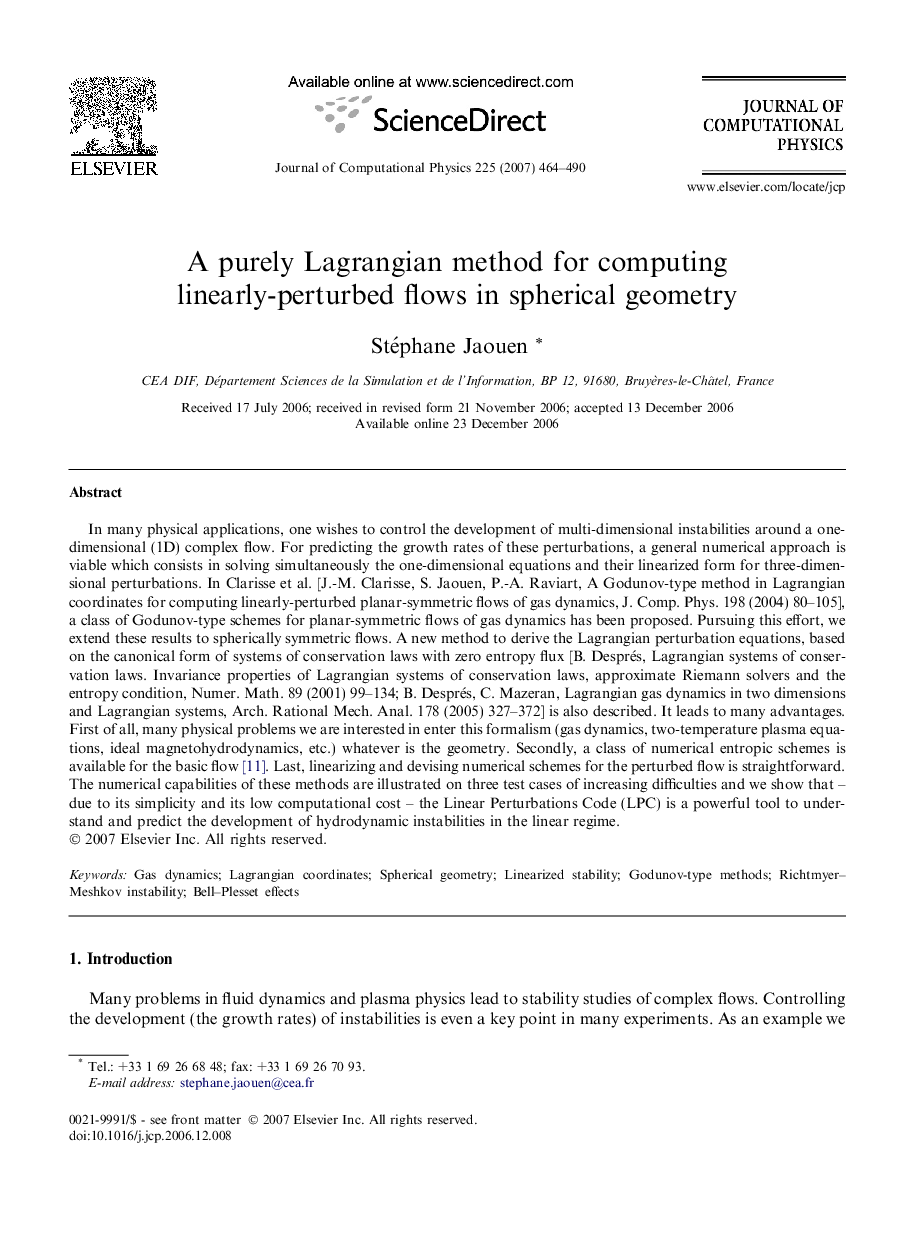| Article ID | Journal | Published Year | Pages | File Type |
|---|---|---|---|---|
| 522137 | Journal of Computational Physics | 2007 | 27 Pages |
In many physical applications, one wishes to control the development of multi-dimensional instabilities around a one-dimensional (1D) complex flow. For predicting the growth rates of these perturbations, a general numerical approach is viable which consists in solving simultaneously the one-dimensional equations and their linearized form for three-dimensional perturbations. In Clarisse et al. [J.-M. Clarisse, S. Jaouen, P.-A. Raviart, A Godunov-type method in Lagrangian coordinates for computing linearly-perturbed planar-symmetric flows of gas dynamics, J. Comp. Phys. 198 (2004) 80–105], a class of Godunov-type schemes for planar-symmetric flows of gas dynamics has been proposed. Pursuing this effort, we extend these results to spherically symmetric flows. A new method to derive the Lagrangian perturbation equations, based on the canonical form of systems of conservation laws with zero entropy flux [B. Després, Lagrangian systems of conservation laws. Invariance properties of Lagrangian systems of conservation laws, approximate Riemann solvers and the entropy condition, Numer. Math. 89 (2001) 99–134; B. Després, C. Mazeran, Lagrangian gas dynamics in two dimensions and Lagrangian systems, Arch. Rational Mech. Anal. 178 (2005) 327–372] is also described. It leads to many advantages. First of all, many physical problems we are interested in enter this formalism (gas dynamics, two-temperature plasma equations, ideal magnetohydrodynamics, etc.) whatever is the geometry. Secondly, a class of numerical entropic schemes is available for the basic flow [11]. Last, linearizing and devising numerical schemes for the perturbed flow is straightforward. The numerical capabilities of these methods are illustrated on three test cases of increasing difficulties and we show that – due to its simplicity and its low computational cost – the Linear Perturbations Code (LPC) is a powerful tool to understand and predict the development of hydrodynamic instabilities in the linear regime.
